
Catocala is a generally Holarctic genus of moths in the family Erebidae. The genus was erected by Franz von Paula Schrank in 1802. The moths are commonly known as underwing moths or simply underwings. These terms are sometimes used for a few related moths, but usually – especially when used in plural, not as part of a species name – they are used to refer to Catocala only.

Catocala piatrix, the penitent underwing, is a moth from North America. The species was first described by Augustus Radcliffe Grote in 1864. It is placed in subfamily Catocalinae, either of the family Noctuidae, or – if the Noctuidae are circumscribed more strictly – of family Erebidae. Within the Catocalinae, it belongs to tribe Catocalini and – if the Noctuidae are circumscribed widely – subtribe Catocalina.

Catocala briseis, the Briseis underwing or ribbed underwing, is a moth of the family Erebidae. The species was first described by William Henry Edwards in 1864. It is found across the North American Boreal forest region from Newfoundland to the Pacific, south to Massachusetts and Pennsylvania.
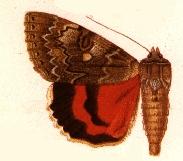
Catocala californica is a moth of the family Erebidae first described by William Henry Edwards in 1864. It is found in western North America from British Columbia and Alberta south through Washington and Oregon to California.

Catocala hermia, the Hermia underwing, is a moth of the family Erebidae. The species was first described by Henry Edwards in 1880. It is found throughout the Great Plains of North America, from southern Saskatchewan and Alberta south and west to Texas, Arizona and California.

Catocala junctura, the joined underwing or Stretch's underwing, is a moth in the family Erebidae. The species was first described by Francis Walker in 1858. It is found throughout temperate North America, ranging from New York and Pennsylvania west to Montana, Colorado, Oklahoma, Arizona, and into Texas, and north to southern Illinois, extreme southern Alberta and Saskatchewan; it has also been recorded west of the Rocky Mountains from California and south-eastern British Columbia. It is typically found near water, where the food plants of its caterpillar larvae grow plentifully.

Catocala nebulosa, the clouded underwing, is a moth of the family Erebidae. The species was first described by William Henry Edwards in 1864. It is found in North America from southern Ontario south through Tennessee to Florida, west to Texas and eastern Oklahoma and north to Iowa, Michigan, Wisconsin and Minnesota.

Catocala desdemona, the Desdemona underwing, is a moth of the family Erebidae. The species was first described by Henry Edwards in 1882. It is found in Utah and Arizona, ranging south into New Mexico and Texas, and onwards through Mexico up to Honduras.
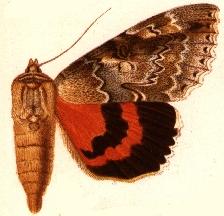
Catocala marmorata, the marbled underwing, is a moth of the family Erebidae. The species was first described by William Henry Edwards in 1864. It is found in the United States from Vermont to South Carolina and west to Indiana and Illinois.
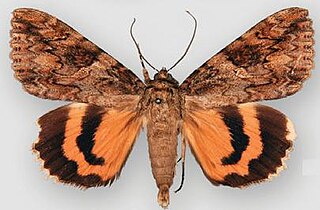
Catocala irene, or Irene's underwing, is a moth of the family Erebidae first described by Hans Hermann Behr in 1870. It is found in the western United States in Utah and California and Nevada.
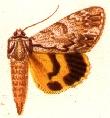
Catocala gracilis, the graceful underwing, is a moth of the family Erebidae. The species was first described by William Henry Edwards in 1864. It is found in North America from Manitoba to Nova Scotia and Maine, south through Connecticut, New Jersey to Florida and west to Mississippi and Missouri.
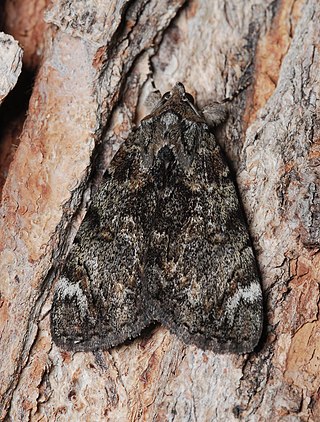
Catocala minuta, the little underwing, is a moth of the family Erebidae. The species was first described by William Henry Edwards in 1864. It is found in the US from New York to Florida and west to Texas and north to South Dakota, Indiana and Michigan.

Catocala andromache, the Andromache underwing, is a moth of the family Erebidae. The species was first described by Henry Edwards in 1885. It is found in the United States from southern California to Arizona.

Catocala similis, the similar underwing, is a moth of the family Erebidae. The species was first described by William Henry Edwards in 1864. It is found in North America from Ontario and Quebec south through Maine and Connecticut to Florida, west to Texas and Oklahoma, and north to Minnesota.

Catocala miranda, the Miranda underwing, is a moth of the family Erebidae. The species was first described by Henry Edwards in 1881. It is found in the US from Illinois, Pennsylvania and Massachusetts to Florida and west to western North Carolina.

Catocala sordida, the sordid underwing, is a moth of the family Erebidae. The species was first described by Augustus Radcliffe Grote in 1877. It is found in North America from Saskatchewan east to New Brunswick and Prince Edward Island and south through Maine and Connecticut to Florida, west to Texas and north to Manitoba.
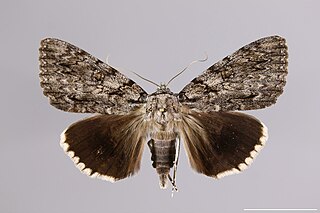
Catocala ulalume, the Ulalume underwing, is a moth of the family Erebidae. The species was first described by Herman Strecker in 1878. It is found in the United States from Virginia through Georgia to Florida, west to Texas and Oklahoma and north to Illinois.
Catocala ella is a moth in the family Erebidae first described by Arthur Gardiner Butler in 1877. It is found in south-eastern Siberia and Japan.
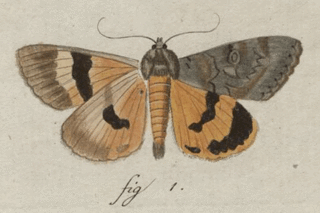
Catocala neonympha is a moth in the family Erebidae first described by Arthur Gardiner Butler in 1877. It is found in south-western Russia, Ukraine, Kazakhstan, eastern Turkey, Iraq, Armenia, Kurdistan, Afghanistan, the Altai Mountains and southern Siberia.

Catocala nivea is a moth in the family Erebidae first described by Arthur Gardiner Butler in 1877. It is found in Japan and Taiwan.













